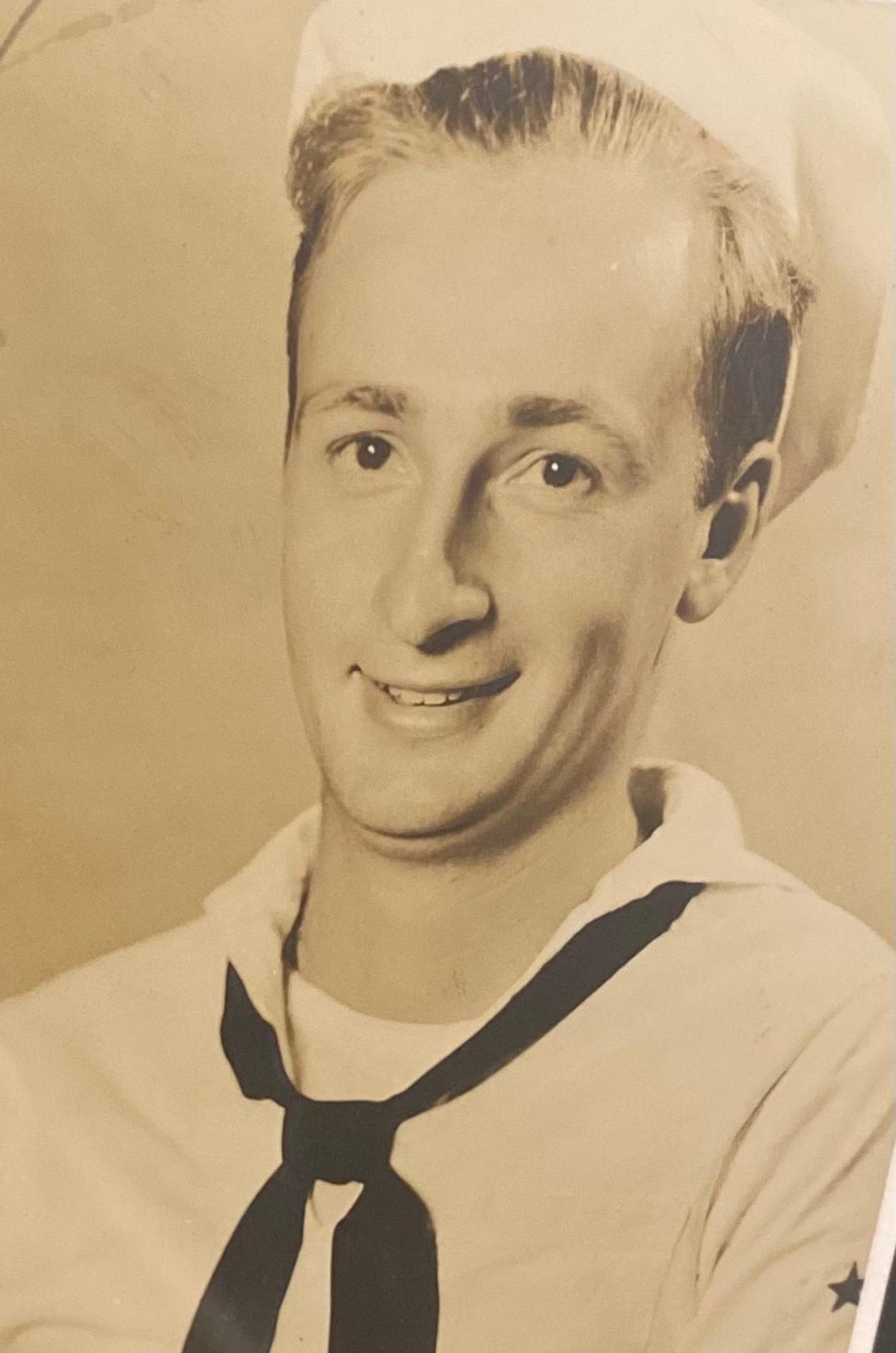This 100-year-old World War II veteran has some stories to tell


Over the course of his 100 years of life, Lee Barry has amassed quite a scrapbook of accomplishments, from serving in the U.S. Navy during World War II, starting Fasco in Shelby that employed 750 people, setting records while hiking the Appalachian Trail in his 70s and 80s, writing books and painting birds, and now, at the century mark, engineering a tent design that can be set up in under 5 minutes.
He remains an inquisitive, passionate man invested in people and life. These days, he is taking great delight in listening to old rock and roll on Alexa, and his daughter, Susan Vasquez, jokes he is punishing her for her teen years.
Susan Vasquez, and her husband, Luis, remember taking a tour of the USS Intrepid, a museum aircraft carrier permanently moored in the Hudson River in New York City, with Barry around a decade ago when he was 90.
A tour guide was showing the group around the museum and although the guide knew the history of the ship, he didn’t know the mechanics and Luis said he saw his father-in-law roll his eyes a few times.
Then they got to the sound-powered telephone, which allows communication from the bridge to the flightdeck.
The guide explained how the system operated but said it wasn’t working
“I can fix that,” Barry said.
“No, you can't,” the guide responded.
Barry started pressing buttons and next thing they knew, a man charged down from the flight deck and asked what happened because he had heard them.
Everyone pointed at Lee Barry.
“This has never worked before,” he said.
Unbeknownst to him, Barry’s first job out of high school was an assistant assembler of sound powered telephones at U.S. Instruments earning 35 cents an hour.
When World War II began in Europe, Barry was transferred to drafting and began doing detailed drawings for the Russians. When Pearl Harbor was bombed and the United States entered the war, Barry enlisted in the U.S. Navy, training at Great Lakes Naval Station and attending fire control officer school. Susan said he was a fire control master, which meant he sighted torpedo guns.
It was while he was on weekend leave in Milwaukee attending a USO dance that he met his future wife of 73 years, Lois Nicholl who was a USO dance volunteer.
The two married in December of 1945.
Barry was transferred to Pearl Harbor where he was assigned the USS Independence which had been torpedoed.
“It was repaired enough to be considered seaworthy, and we were to sail it to San Francisco for major repairs,” he said. “In San Francisco most of the crew, myself included, was assigned to other warships. I was assigned to USS Hector. We sailed back to the Pacific and were attached to US Naval Task Force 58."
Task Force 58 advanced towards Japan, island by island.
Near the end of the war, he made the rank of fire controlman petty officer two and was transferred to the USS Cebu.
Susan has a folder chock full of newspaper clippings, photos, old military documents - including comical ship newspapers - and pages of notes collected from Barry on yellow lined notepad paper.
Barry’s story begins in Newark, New Jersey, where he was born on April 26, 1923 to immigrant parents, John Barylewicz, from Poland, and Anna Karmazyn, from Lviv, Ukraine.
Barry said his parents couldn't speak English so neither did he. He first learned to speak the language at age 6 when he went to school.
A lifelong learner, it all started in a junkyard.
“Our tenement housing was directly across the street from a junkyard,” Barry said in notes collected by his daughter. “In it were stacks of National Geographic. I was permitted to borrow them to look through them. In that way my knowledge of our world expanded rapidly. Soon I learned to read and that led to locating a nearby library. We were allowed to check out two books at a time. Soon I became an avid reader.”
His life in Shelby began in 1974 when, after being employed by Fasco Industries, he was told to find a location for a new automotive division. He settled on Shelby and a plant was opened.
Susan said at that time, cotton mills still employed a lot of people in the county, but Fasco offered new opportunities for well paying jobs.
“He made sure the labor force reflected the population appropriately,” Susan said. “And he encouraged everyone to get an education.”
She said he would arrive at work around 5 a.m. and would talk to every person on each shift.
He still receives birthday cards and calls from former employees.
“Those relationships don’t break,” she said.
She said her father was famous on the Appalachian Trail, even setting and holding a 13-year record for the oldest person to hike the entire length of the trail, and one day, while hiking, he met a retired law enforcement officer and helped him head the right way on the trail and gave him guidance.
“He always called him coach,” she said.
The nickname stuck.
“He still calls dad once a month, even once a week. He has that effect on people,” she said.
Susan and Luis Vasquez currently live with Barry in his Shelby home. She said they moved south from New York in 2019 after her mother passed away.
“He’s been an inspiration to a lot of people,” she said.
Reporter Rebecca Sitzes can be reached at rsitzes@gannett.com.
This article originally appeared on The Shelby Star: Local World War II veteran turns 100

